I've seen this question. But that's aimed at connections that see rain/spray.
I've got a 4-20mA sensor which I want to submerge in up to 35m of water. The sensor, unfortunately, comes with a 5m cable. So I'll need to make a waterproof connection that can survive submersion up to 30m and is insulated well enough that leakage current is insignificant compared to 4mA. I have the added requirement that the water is potable and so any solution should not pollute the water - must be food safe.
Suggestions on the other question are:
- Grease-filled wire nuts - these seem to me to fail the food-safe requirement.
- Grease-filled IDC - likewise.
- Adhesive-lined heatshrink - not sure on the food safety or the waterproofing at that depth.
- Adhesive-lined crimp/solder splices - likewise.
- Packing the connection in silicone - this looks the most likely to me, so long as a food-grade silicone is used.
Another possibility that occurred to me is to pack a solder join in epoxy.
Any other options?
